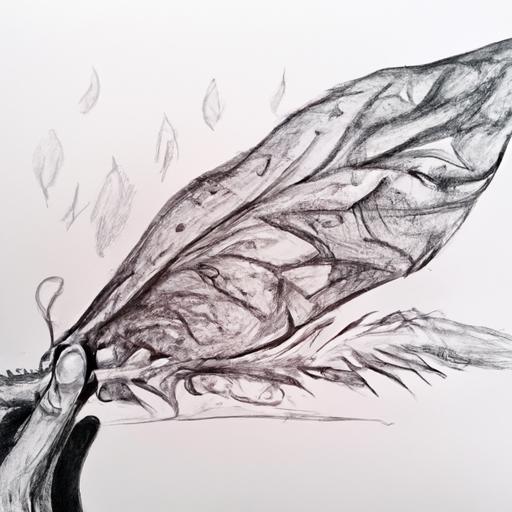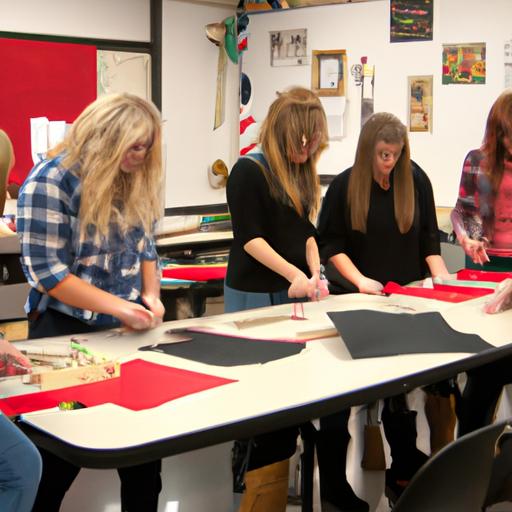Japan is renowned for its rich cultural heritage, and one aspect that stands out is its traditional art. From delicate brushwork to intricate designs, Japanese traditional art mesmerizes with its beauty and elegance. These art forms not only reflect the country’s history but also hold immense cultural significance. In this article, let’s delve into the captivating world of Japanese traditional art, with a particular focus on its representation in card games.
A. Overview of Japanese traditional art
Japanese traditional art encompasses a wide range of art forms, including painting, calligraphy, ceramics, and woodblock prints. Each art form has its unique techniques, aesthetics, and historical context. For centuries, artists in Japan have honed their skills to create masterpieces that capture the essence of the country’s culture.
B. Importance and cultural significance of traditional art in Japan
Traditional art in Japan goes beyond mere aesthetics; it is deeply intertwined with the nation’s cultural identity. These art forms serve as a means of communication, preserving stories, traditions, and spiritual beliefs. They are a testament to Japan’s rich history and its people’s appreciation for beauty and craftsmanship.
Moreover, traditional art plays a vital role in connecting generations. It serves as a bridge between the past and the present, allowing us to understand and appreciate the cultural heritage handed down through centuries. By exploring Japanese traditional art, we gain insights into the values, beliefs, and aesthetics that have shaped Japanese society.
As we delve deeper into the realm of Japanese traditional art, we will discover how it intertwines with the world of card games, creating a unique fusion of tradition and entertainment. Join me on this journey as we explore the captivating world of japanese traditional art showing card games.
History of Japanese Traditional Art
A. Origins and Evolution of Traditional Art Forms
Japanese traditional art traces its roots back thousands of years, evolving alongside the country’s rich cultural history. The origins of these art forms can be found in ancient rituals, religious practices, and courtly traditions. Over time, they transformed and adapted, reflecting the societal changes and influences from other cultures.
One of the earliest forms of traditional art in Japan is calligraphy, known as “Shodo.” Calligraphy emerged during the 5th century, heavily influenced by Chinese script. It is an art of expressive writing, where the strokes and characters convey meaning and emotion. From religious texts to personal letters, calligraphy has been an integral part of Japanese culture.
Painting, another prominent art form, flourished during the Heian period (794-1185). Artists often depicted scenes from nature, landscapes, and courtly life. The use of delicate brushwork, vibrant colors, and the incorporation of gold leaf characterized these paintings. Notable painting styles include Yamato-e, Tosa School, and Kano School.
B. Influence of Historical Events on Traditional Art Development
Historical events have played a significant role in shaping and influencing the development of Japanese traditional art. The introduction of Buddhism from China and Korea during the 6th century brought new artistic techniques and themes. Buddhist sculptures, temple architecture, and religious paintings became an integral part of Japan’s artistic landscape.
During the Edo period (1603-1868), Japan experienced relative peace and stability. This period witnessed the rise of the ukiyo-e woodblock prints, which depicted the “floating world” of entertainment, kabuki actors, and beautiful landscapes. These prints gained immense popularity, both domestically and internationally, influencing artists such as Vincent van Gogh and Claude Monet.
The Meiji Restoration in the late 19th century marked a turning point for traditional art in Japan. The country opened its doors to the Western world, leading to the assimilation of Western artistic techniques and styles. While traditional art persisted, it also underwent transformations, blending traditional Japanese aesthetics with modern influences.
Understanding the historical context and the evolution of Japanese traditional art provides us with a deeper appreciation of its significance and the diverse art forms that have emerged throughout the centuries. In the next section, we will explore the realm of traditional card games in Japan, where art and entertainment intertwine.
Traditional Card Games in Japan
Card games have been an integral part of Japanese culture for centuries, providing entertainment and fostering social connections. Let’s explore the world of traditional Japanese card games, where skill and strategy intertwine with cultural heritage.
A. Introduction to Japanese card games
Japanese card games, known as “torifuda,” have a long history and are deeply ingrained in the country’s cultural fabric. These games involve the use of specially designed cards, each with its own unique symbols and characteristics. Unlike Western card games like poker or blackjack, Japanese card games often emphasize different aspects such as memory, strategy, and quick thinking.
B. Popular traditional card games in Japan
-
Hanafuda: Hanafuda, meaning “flower cards,” is one of the most beloved traditional card games in Japan. Originating in the 18th century, it features beautifully illustrated cards depicting seasonal flowers, animals, and other symbols. Players aim to create specific card combinations to earn points, making it a game of both skill and luck.
-
Karuta: Karuta is a fast-paced card game that tests players’ reflexes and memory. It consists of two types of cards: “yomifuda” (reading cards) and “torifuda” (grabbing cards). The yomifuda display a poem’s first lines, while the torifuda contain the last lines. Players compete to match the yomifuda with the corresponding torifuda, requiring quick thinking and knowledge of classical Japanese poetry.
-
Hachihachishiki: Hachihachishiki, meaning “88 cards,” is a strategic card game that originated in the Edo period. It utilizes a deck of 88 cards, each representing various historical figures, myths, or events. Players aim to capture cards from their opponents by strategically placing their own cards, creating a captivating battle of wits and tactics.
C. Rules and gameplay of traditional card games
Each traditional card game in Japan has its own set of rules and gameplay mechanics. While the specifics may vary, these games often require players to employ strategy, memory, and observation skills. Whether it’s collecting specific card combinations, matching cards based on poems, or outmaneuvering opponents, traditional Japanese card games offer a unique and engaging experience.
In the next section, we will explore how traditional art influences the designs of these card games, adding a visual and cultural dimension to the gameplay. So, grab a deck of cards and get ready to immerse yourself in the captivating world of Japanese traditional art within card games.
Influence of Traditional Art on Card Game Designs
In the realm of card games, the influence of Japanese traditional art is evident through the incorporation of its elements into card game illustrations. This fusion of traditional art and gaming not only enhances the visual appeal but also adds depth and cultural significance to the gameplay experience.
A. Incorporation of traditional art elements in card game illustrations
Card game designers draw inspiration from various traditional art forms such as ukiyo-e, sumi-e, and kamon (family crests) to create visually stunning cards. They skillfully integrate iconic motifs, intricate patterns, and vibrant colors that are synonymous with Japanese traditional art. By doing so, they pay homage to the rich cultural heritage of Japan and breathe life into the game’s visuals.
The use of traditional art elements goes beyond mere aesthetics. It adds storytelling elements, allowing players to immerse themselves in the game’s narrative. Each card becomes a miniature canvas, depicting characters, landscapes, and objects that reflect the essence of Japan’s traditional art forms.
B. Symbolism in traditional art used in card game designs
Traditional art in Japan is often laden with symbolism, and this symbolism finds its way into card game designs. From the choice of colors to the depiction of specific motifs, every element carries deeper meaning. For instance, cherry blossoms symbolize the ephemeral nature of life, while dragons represent power and strength.
By incorporating these symbolic elements into card game designs, players are not only engaged in the gameplay but also invited to explore the cultural significance behind the visuals. It adds layers of depth and meaning, making the gaming experience more immersive and thought-provoking.
In the next section, we will delve into the efforts made to preserve and promote Japanese traditional art, with a specific focus on the role of card games in reaching a wider audience. Join me as we uncover the initiatives driving the preservation and promotion of these timeless art forms.
Preservation and Promotion of Japanese Traditional Art
In a rapidly changing world, preserving cultural heritage is paramount. Japan recognizes the importance of safeguarding its traditional art forms and has implemented various initiatives to ensure their longevity. These efforts go beyond mere preservation; they also aim to promote traditional art and make it accessible to a wider audience. Let’s explore the endeavors undertaken to preserve and promote Japanese traditional art.
A. Efforts to preserve traditional art forms in Japan
Preserving traditional art forms requires meticulous care and dedicated efforts. In Japan, organizations such as the Agency for Cultural Affairs and various art museums play a crucial role in safeguarding traditional art. They conduct research, organize exhibitions, and provide funding for artists and artisans to continue practicing their craft.
Furthermore, apprenticeship programs have been established to pass down the specialized skills and techniques required for traditional art forms. Master artists take on apprentices, ensuring the art forms are not lost to time. These programs serve as a vital link between generations, fostering the transmission of knowledge and preserving the authenticity of traditional art.
B. Role of card games in promoting traditional art to a wider audience
Card games, with their universal appeal and interactive nature, have become a platform to showcase and promote Japanese traditional art to a broader audience. By incorporating traditional art elements in card game illustrations, the intricate beauty of these art forms is brought to life in a modern context.
The use of traditional art in card game designs serves as a visual gateway, enticing players to explore the rich cultural heritage behind the artwork. Players not only engage in entertaining gameplay but also gain an appreciation for the art forms, their symbolism, and their historical significance.
Moreover, card games provide an opportunity for cultural exchange. As these games gain popularity globally, they serve as a means for people from different backgrounds to connect with Japanese traditional art. By experiencing the art through gameplay, individuals can develop a deeper understanding and respect for Japan’s cultural legacy.
In the next section, we will delve into the influence of traditional art on card game designs, exploring how symbolism and aesthetics are seamlessly woven together. Join me as we uncover the captivating fusion of traditional art and card games.
Conclusion
In conclusion, Japanese traditional art has found a captivating expression in the realm of card games. The fusion of artistic elements and gameplay creates a unique and immersive experience that both entertains and educates players. Through card games like Hanafuda, Karuta, and Hachihachishiki, players can delve into the rich cultural heritage of Japan and appreciate the intricate beauty of traditional art.
The integration of traditional art in card game designs not only adds aesthetic appeal but also serves as a catalyst for preserving and promoting these art forms. By introducing traditional art to a wider audience through card games, cultural appreciation and understanding are fostered, ensuring that these art forms continue to thrive for generations to come.
As we embrace the future, the integration of Japanese traditional art in card game designs holds immense potential. It allows for the exploration of new narratives, themes, and visual representations, bringing traditional art to life in innovative ways. The fusion of tradition and modernity creates a dynamic and engaging experience, bridging the gap between the old and the new.
So, whether you are a lover of traditional art, a card game enthusiast, or simply curious about Japanese culture, exploring the world of Japanese traditional art showing card games is a delightful journey. Immerse yourself in the intricate illustrations, unravel the symbolism, and embrace the cultural richness that these card games offer.
Are you ready to embark on this artistic adventure? Step into the realm of Japanese traditional art showing card games and experience the beauty, history, and cultural significance that await. Let the cards guide you through a world where tradition and artistry intertwine, and where every shuffle and play reveals a story waiting to be discovered.





